Shawn Martinbrough breathes life into the art of Noir

The images that are born in the mind of the artist dwell in darkness until they are pulled forth into the light by the creator’s medium. Therefore it is only fitting that the art of Shawn Martinbrough, draped in the beautiful vestiges of shadow and smoke, is a display that carries impact as it resonates with the echoes of Modern Noir. Never has the art of shadow looked so good. With an impressive client list that includes the likes of The Topps Company, Playboy, Vibe, Bad Boy Entertainment and Penguin Books (just to name a few), he has firmly established himself as an artist of incredible talent. Most readers may be more familiar with the bulk of his work which has been done for Marvel Comics, Vertigo and DC Comics. His two-year collaboration with industry powerhouse Greg Rucka on Batman: Detective Comics saw him co-create characters that were later featured in the Batman: Gotham Knights animated DVD; which later served as a companion piece to the Christopher Nolan helmed trilogy. This in itself has helped to burn his work into the minds of fans the world over, but it is the sheer power and imagination of his work that serves as the bedrock of proof positive of his true talent. Taking time from a packed schedule, Mr. Martinbrough shared a bit about the art of shadow, Skybound‘s Thief of Thieves, advice for aspiring comic creators, his work on The Ren with Verge Entertainment and more.
Mark Turner: The third story arc of the incredible title Thief of Thieves wrapped at the end of January, what else have you been working on that fans can keep an eye out for?
Shawn Martinbrough: I’ve been hard at work drawing the fourth arc of “Thief of Thieves” which is titled “The HIT LIST”.
This is a very challenging arc because, in addition to crafting a satisfying capper to his previous arc, our regular writer Andy Diggle is tasked with resolving all of the past storylines by Robert Kirkman, Nick Spencer and James Asmus. Capturing the emotional intensity of the characters and visualizing the rhythmic flow for the drama and action has been very fun for me as the artist.
Recently, Andy and I happened to be in New York City at the same time. I live in the Washington, DC area and Andy lives in the U.K. so we communicate primarily through email. It was great to catch up in person and kick around ideas for the next chapter in the series. We’ve also welcomed on board colorist Adriano Lucas who’s also doing some amazing work.
I’ve also been co-writing a graphic novel project for First Second Books called “The REN”. “The REN” is set in the classic era of Harlem Renaissance and focuses on Black musicians and artists against a backdrop of organized crime. Joseph Illidge is my co-writer and the art will be done by Grey Williamson. Joe and I turned in our first draft to our editor Calista Brill so I’m excited to hear her feedback.
I also have one or two projects in the works with my production company Verge Entertainment that we will be announcing soon.
MT: Much of your work carries a sense of being heavily influenced by the noir style of film making (high contrast and rich, black shadows). What would you say some of your visual influences are in terms of films that inform your style?
SM: I’m heavily influenced by shows on film and television. Dramas like “Breaking Bad”, “Boardwalk Empire”, “MadMen”, and “Hannibal” (to name a few) are visual feasts for me. There are numerous directors whose style influence my approach to storytelling. In no particular order, Steven Spielberg, Tony and Ridley Scott, David Fincher, Spike Lee, Sam Mendes are examples of directors whose style of filmmaking inspires me. I’m also drawn to various media. For example, I’ll see an advertisement in a magazine that catches my eye and will incorporate that into a panel of “Thief of Thieves”. The great old stand by for inspiration is a trip to the museum or the movies.
MT: Currently, you are hard at work with the talented Joseph Illidge on the project The Ren. Have you ever taken on a project of this scope? How well informed will the final look of the project be from historical references?
SM: From the writing standpoint, “The REN” is the first time Joe and I have tackled a project which requires a level of historical accuracy and blends fact with fiction. It’s a great motivator to re-familiarize ourselves with historical facts and research new aspects of the period. Our friend and colleague Christopher Chambers, who is a professor at Georgetown, has been a great resource for insights into the period.
Grey Williamson is the artist on “The REN” and he has made it very clear that is this is a special project for him. Growing up in New York City and having spent considerable time in Harlem, Grey is brings a very unique perspective to illustrating and building creatively on the era of the Harlem Renaissance.
MT: With a career that has seen you working for the big two and on some of the most prolific characters, have you ever experienced the itch to create your own ongoing characters to bring to the medium?
SM: Definitely. My partners and I at Verge Entertainment have a library of original properties. “The Ren” is our first project which we chose to set up as a graphic novel with First Second Books. Others will follow with different partners.
MT: What advice would you give to artists looking to break into the industry?
SM: It’s a cliché but study your craft and the industry. I can’t tell you how many independent artists that I meet who want to break into the industry right now but unfortunately, their artwork is below industry standards. The majority of the artists that inspired me growing up had formal training such as attending an art school, taking formal classes or working with editors who pushed them to improve. Today it seems that aspiring artists just want to jump right in rather than put in the work to develop their craft. Social media is a great equalizer in terms of getting your work seen by the masses but it also creates bubbles where aspiring creators are cheered on by their family and friends (who don’t know any better) and have no clue how to operate or compete in a real professional environment. This holds true for writers especially. It also really irks me when I see others take a key component of comic storytelling like lettering for granted and think, “Oh, this is something I can save a few bucks on by not paying a professional and just do myself.” It boggles my mind when I see professionals do this. They should know better. It’s an art form.
MT: How do you navigate a field that sees a narrow bandwidth of talent working for the big two?
SM: The only advice I can offer is be as creatively competitive with the top men and women in the industry and most important, be professional. This is a business.
MT: As an established artist of incredible talent, any advice/ insight/ words of wisdom that you might be able to share on the topic of writer/artist relationships (things writers should consider when asking artists to work on their projects and things artists should consider when being asked) for those looking to launch their own titles
SM: First off, what’s your budget? As an artist, I have folks approaching me every day with a “great idea for a graphic novel” but have no money to pay. Here’s a tip, offering ownership is not going to help an artist pay their bills. Also, an aspiring writer must understand that it takes more work and energy to actually draw a comic than it does to write one. Second, what are your qualifications as a writer? Unfortunately, too many people confuse having an idea with being a writer. Having a body of work that has been held to some level of an industry standard can help secure an artist worth their salt.
MT: Would you say that the issue of industry diversity would better improve if there were more under represented demographics in editorial positions?
SM: Yes. Sorry, I can’t really elaborate more on that question.
MT: How can fans help contribute to an industry that is as rich as the world that we live in?
SM: Fans can diversity and challenge the industry by expanding their own tastes and wealth of knowledge. Some fans constantly complain about the way the comic industry does business, such as endless crossovers, lame treatment of characters, etc but THEY STILL BUY THEM. Why would the industry change? I guess that I’m in the minority. If I don’t like something, I don’t complain about it on social media, I simply don’t buy it. The crazy thing is fans, who are the harshest critics of working professionals, will put out some of the most amateurish looking indy projects. I simply scratch my head and think, “How can you tear this apart and then produce something like that??”
MT: Anything that you are reading, watching, listening to right now that is firing your imagination?
SM: On television: “True Detective”, “House of Cards” and “Hannibal season 2”. In Comics: “Starlight”, “Southern Bastards”, “SAGA” & “B.P.R.D”.
Books: “DOUBLE DOWN” by Mark Halperin and John Heilemann and “DECODED” by Jay-Z.
MT: What’s your favorite Noir film?
SM: I really can’t name one favorite. There are just too many Noir themed movies that I love. The most recent Noir themed film that I watched was David Fincher’s “The Girl with the Dragon Tattoo”. Simply brilliant storytelling.
Shawn is the author of “How to Draw Noir Comics: The Art and Technique of Visual Storytelling”, an instructional art book published by Random House. More of Shawn’s credits and artwork can be seen at http://www.shawnmartinbrough.com/. He also sporadically tweets at @smartinbrough.
Batman is TM and © 2014 DC Comics. All rights reserved.
Thief of Thieves is TM and © 2014 Robert Kirkman, LLC. All rights reserved.
The Ren is TM and © 2014 Shawn Martinbrough, Joseph Phillip Illidge and Grey Williamson. All rights reserved.
How to Draw Noir Comics: The Art and Technique of Visual Storytelling is TM and ©2014 Shawn Martinbrough. All rights reserved.
This article is © 2014 Mark C. Turner. All rights reserved.

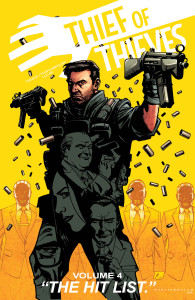
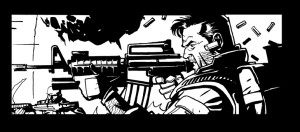
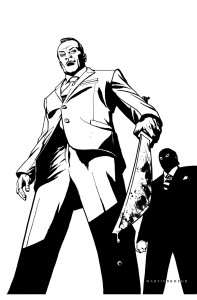

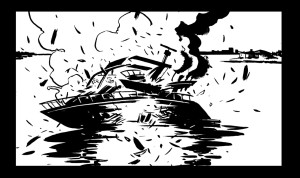

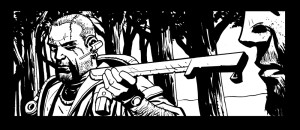

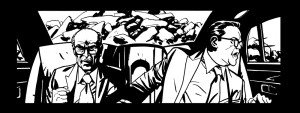

Outstanding interview. Way to go, Mark!
And Shawn is such a statesman! I would love for Verge to one-day dust off his old “W” comic announced from Axis back in the day. But with everything he’s putting into ToT and Ren, I suppose he’d have to clone himself first. Which would be great for the industry. 😉
Thank you Richard and I agree. Shawn is an incredible talent and extremely gracious! I would be curious to see “W” over at Verge as well….who knows, maybe cloning technology isn’t as far off as we might think. 😉